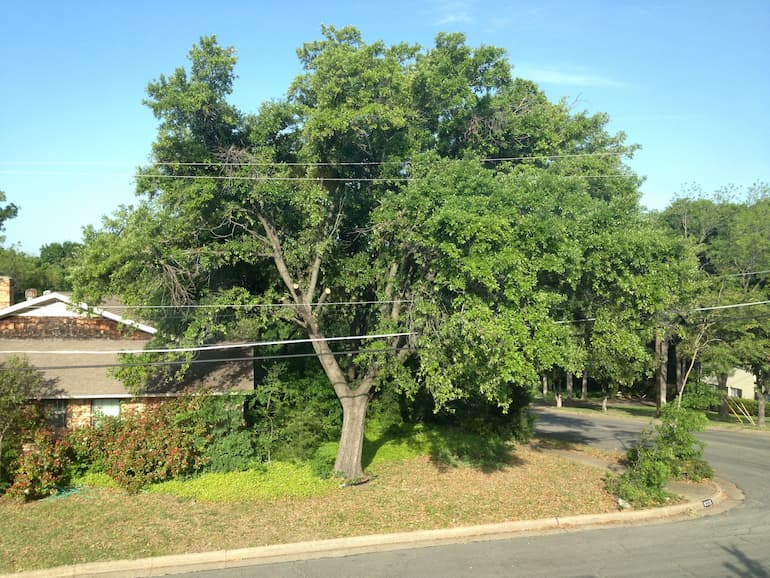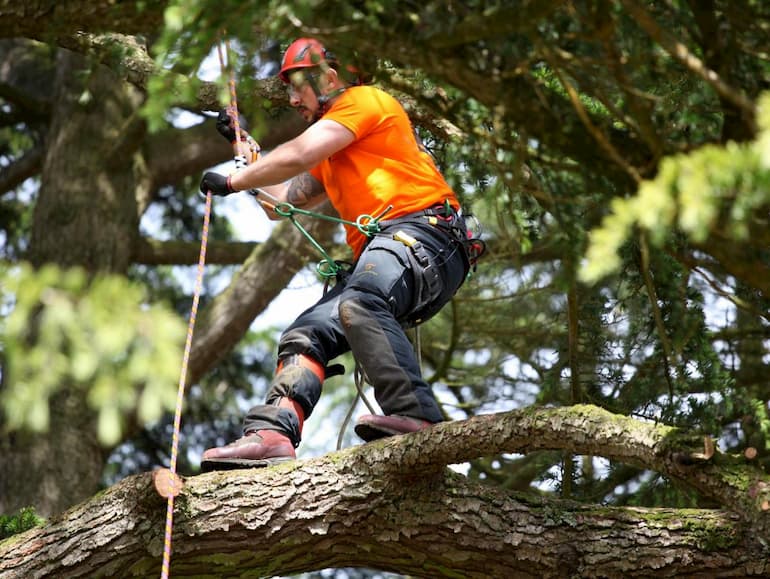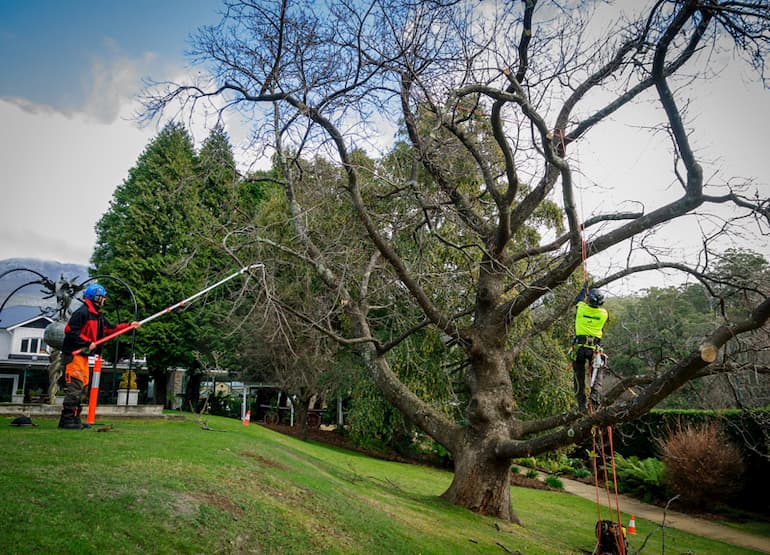Trees that grow close to power lines (even if they aren’t too big) are a risk that could put you and the entire neighbourhood in danger. Sure, a tree may seem too short now to pose a problem, but over the years its branches can get close to the lines. And if they touch there could be a blackout and shortage of power, or even a fire.
There’s a simple rule – power lines and trees shouldn’t come near each other. So, if a tree in your yard becomes too big, it’s time for tree clearing. If you don’t know how this is done, we don’t encourage you to learn how to do it. You should always hire a professional tree clearing company that will take care of the work safely while following all regulations and requirements.

Signs of a Dangerous Tree
Besides coming near to a powerline, trees can also pose a risk if one of their branches or the entire tree falls. This can happen during a storm, when there are strong winds and if the tree is unhealthy. For these reasons, it’s smart to inspect your tree for potential health problems.
You don’t have to be an expert to notice that something is wrong with a tree in your yard. There are many indicators such as dead branches that could easily fall during stronger winds or heavy rains. Dead branches have brown withered leaves or no leaves a tall. Sometimes these branches can be small, but there are cases where they can be huge, and it would be impossible to remove them on your own.
Some trees have seasonal cracks in the surface of their trunks (which isn’t always a problem). A tree’s trunk is an indicator of its health. Keep an eye for cracks, cavities or deeper splits. These can have unstable soil, damages or rot of the trunk. Another sign is if the tree looks unhealthy such as unusual shape or stunted growth. The tree may have no leaves or the condition of the leaves is bad (dying leaves, thin leaves, discolouration).
Clearance Requirements
Keep in mind that not all trees that grow around public utilities have the same power line clearance requirements. There’s a difference of voltage between transmission and distribution lines. Both types of lines have various line clearance regulations to keep blackouts at bay and which should be followed to keep everyone safe.

Transmission Line Requirements
First of all, when it comes to transmission lines (high voltage transmission lines), they run on steel towers or big wooden structures and include multiple lines. Their job is to move the electricity from the power plant to the substations for pick up (this is why they have high voltage). These are the transition line clearance requirements:
- Trees and other vegetation that is in constant growth should be trimmed beyond the minimum clearance;
- Trees and vegetation growing near to the transmission power line must be trimmed or removed to avoid contact;
- Every utility company should implement a vegetation management plan to comply with these regulations.
Distribution Line Clearance Requirements
Distribution lines have lower voltages of around 100kV or below (these are the electrical poles in your neighbourhood and near roads that carry electricity from the sub-stations to homes and business and the end consumer). Although distribution lines have lower voltages, they are still exposed to risk from fallen trees during big storms or tree removal accidents. Having a suitable plan for vegetation management could mean the difference between unnecessary power interruptions and content customers for your utility company.

Safe Practices (Hire Qualified people)
If you notice a damaged or dangerous tree near your home, on the road or close to your workplace, you shouldn’t try to remove it yourself. Tree clearing must always be done by qualified contractors. Although you may be able to save the tree in some cases, make sure you never do that alone. Power line clearing should only be done without the help of professionals. This especially goes for trees on roadside and public land.
Besides being unsafe, there are other reasons why you should leave this task to the professionals. First of all, you don’t have suitable equipment and protection gear. And purchasing these things can be more expensive than paying for professional tree clearing. What’s more, the professional tree surgeon can offer various additional services such as diagnostic and risk assessments on your trees.
When you call the professionals, besides removing the dangerous tree, they can also perform a tree inspection which can have many benefits. This way, they can give tailored expert advice on how to keep your trees in healthy condition all year around. This isn’t just cutting a branch or two; these people are trained and educated in this area and can notice things that you yourself might have overlooked. And besides that, they have licenses and are insured and have long experience in this work.
Planning for New Trees
Of course, besides thinking about your existing trees, you also need to be careful about any new tree you plan to add to your landscape. Before you plant a new tree, make a good plan. If the tree is now small, keep in mind that it will grow big in a few years and may become a problem for the power lines. So, consider what the best spot for planting is. Be safe and look up more information. Educate yourself on the kind of the tree you want to plant (how fast it grows, will it grow well in your area, how to take care of it). If you aren’t sure about the size of the tree you want to plant, call professionals and discuss this with them.

